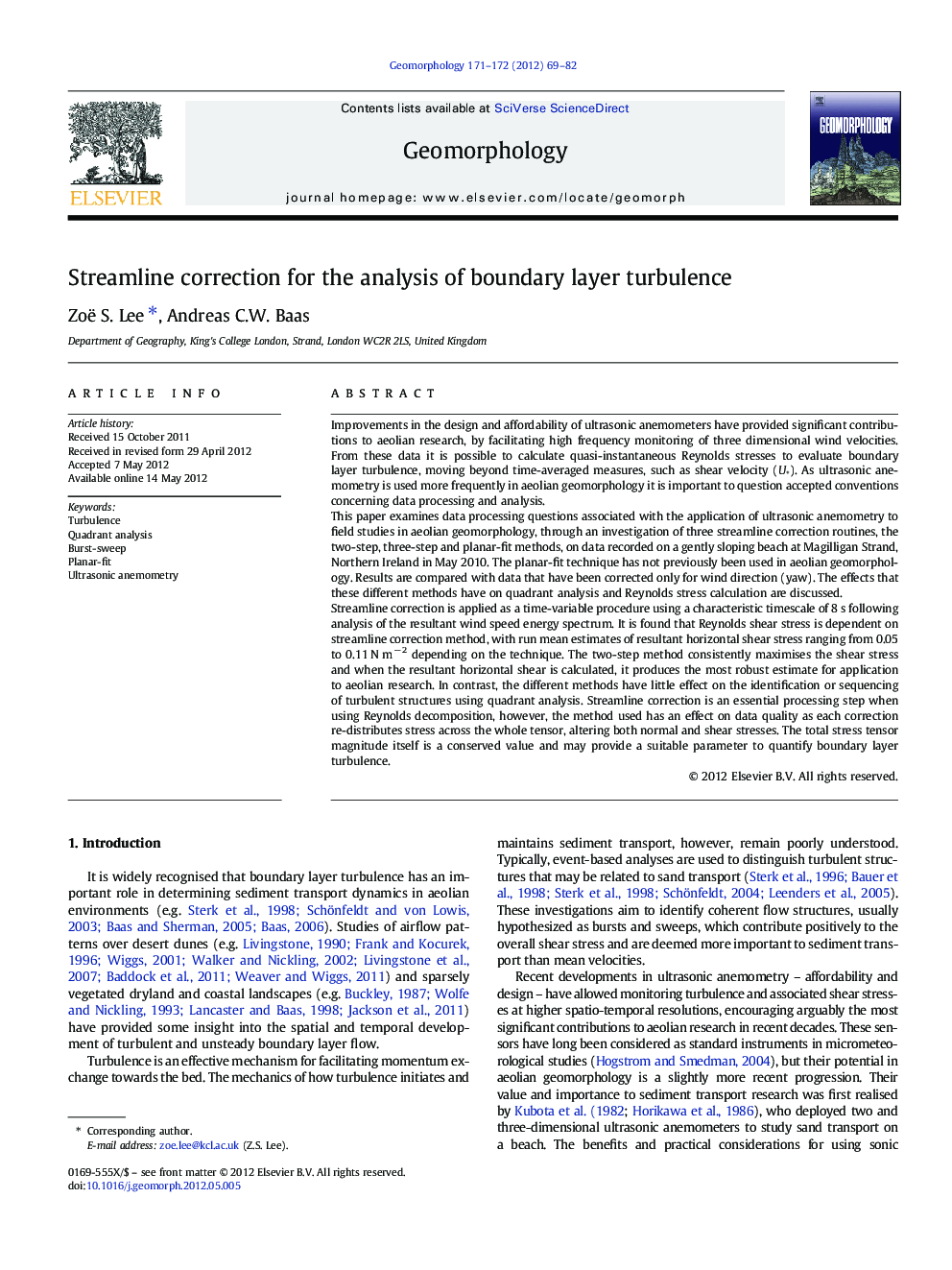| کد مقاله | کد نشریه | سال انتشار | مقاله انگلیسی | نسخه تمام متن |
|---|---|---|---|---|
| 6432855 | 1635473 | 2012 | 14 صفحه PDF | دانلود رایگان |

Improvements in the design and affordability of ultrasonic anemometers have provided significant contributions to aeolian research, by facilitating high frequency monitoring of three dimensional wind velocities. From these data it is possible to calculate quasi-instantaneous Reynolds stresses to evaluate boundary layer turbulence, moving beyond time-averaged measures, such as shear velocity (U*). As ultrasonic anemometry is used more frequently in aeolian geomorphology it is important to question accepted conventions concerning data processing and analysis.This paper examines data processing questions associated with the application of ultrasonic anemometry to field studies in aeolian geomorphology, through an investigation of three streamline correction routines, the two-step, three-step and planar-fit methods, on data recorded on a gently sloping beach at Magilligan Strand, Northern Ireland in May 2010. The planar-fit technique has not previously been used in aeolian geomorphology. Results are compared with data that have been corrected only for wind direction (yaw). The effects that these different methods have on quadrant analysis and Reynolds stress calculation are discussed.Streamline correction is applied as a time-variable procedure using a characteristic timescale of 8 s following analysis of the resultant wind speed energy spectrum. It is found that Reynolds shear stress is dependent on streamline correction method, with run mean estimates of resultant horizontal shear stress ranging from 0.05 to 0.11 N mâ 2 depending on the technique. The two-step method consistently maximises the shear stress and when the resultant horizontal shear is calculated, it produces the most robust estimate for application to aeolian research. In contrast, the different methods have little effect on the identification or sequencing of turbulent structures using quadrant analysis. Streamline correction is an essential processing step when using Reynolds decomposition, however, the method used has an effect on data quality as each correction re-distributes stress across the whole tensor, altering both normal and shear stresses. The total stress tensor magnitude itself is a conserved value and may provide a suitable parameter to quantify boundary layer turbulence.
⺠The two-step, three-step and planar-fit streamline transformations are compared. ⺠The planar-fit method, previously untested, is viable for short wind data-sets. ⺠Streamline corrections redistribute stress across the whole stress tensor. ⺠Shear stress estimates are dependent on which correction method is used. ⺠Quadrant analysis results are less affected by correction method choice.
Journal: Geomorphology - Volumes 171â172, 15 October 2012, Pages 69-82